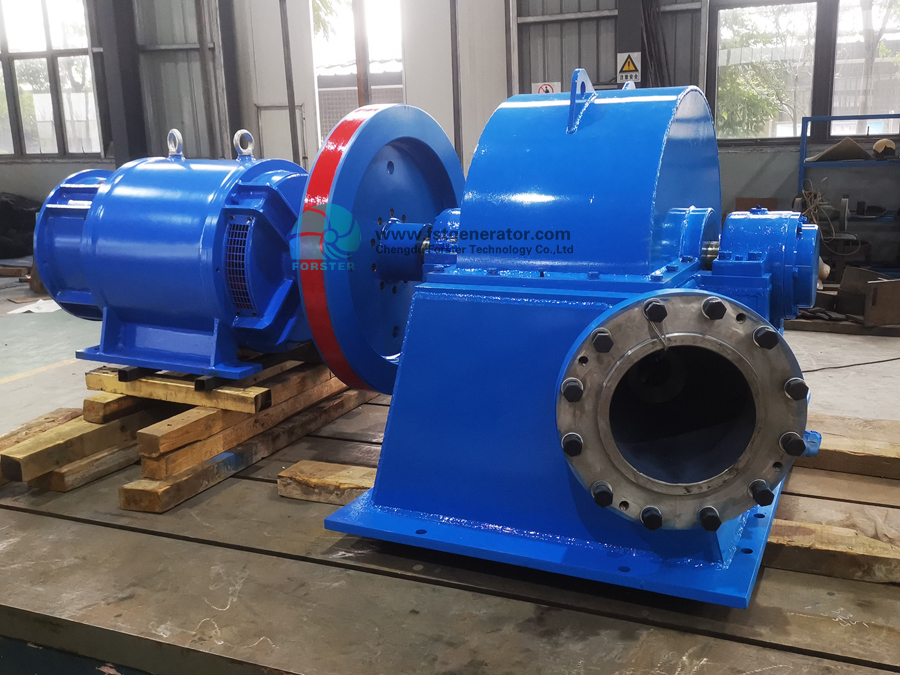Progression, referring to this, you may think of the progression of obtaining professional certificates, such as CET-4 and CET-6. In the motor, the motor also has stages. The series here does not refer to the height of the motor, but to the synchronous speed of the motor. Let’s take level 4 motor as an example to see the specific meaning of motor series.
Level 4 motor refers to 1-minute synchronous speed of motor = {frequency of power supply (50Hz) × 60 seconds} ÷ (motor stages ÷ 2) =3000 ÷ 2 = 1500 revolutions. In the factory, we often hear that the motor is of several stages. To understand, we must first know the concept of pole: pole refers to the magnetic pole formed by the generator rotor after the excitation current is applied to the rotor coil. In short, it means that each revolution of the rotor can induce several cycles of current in one turn of the stator coil. It is necessary to generate 50Hz potential if the number of poles is different Different speeds are required. 50Hz, 60 seconds and minutes (i.e. 3000) divided by the number of poles is the number of revolutions of the motor per minute. The same is true for the motor, which is just an inverse process of the generator.
The number of poles reflects the synchronous speed of the motor. The 2-pole synchronous speed is 3000rmin, the 4-pole synchronous speed is 1500rmin, the 6-pole synchronous speed is 1000rmin, and the 8-pole synchronous speed is 750rmin. It can be understood that the 2-pole is the base number (3000) , 4 poles can only be divided into 2, 6 poles can be divided into 3, and 8 poles can be divided into 4. Instead of 2 poles, 3000 should be used to remove 2. The more the number of poles of the motor, the lower the speed of the motor, but the greater its torque; when selecting the motor, you should consider the starting torque required by the load. For example, the torque required for starting with load is greater than that for no-load starting. If it is high-power and heavy load starting, The step-down start (or star delta start) shall also be considered; as for the speed matching with the load after determining the number of poles of the motor, it can be considered to drive with belt pulley of different diameter or with variable speed gear (Gearbox) If the power requirements of the load cannot be met after determining the number of poles of the motor through belt or gear transmission, the use power of the motor must be considered.
Three phase AC motor is mainly composed of stator and rotor. When three-phase AC is connected to the stator, a rotating magnetic field will be generated. The magnetic field always has two poles (also can be said to appear in pairs), namely N pole (North Pole) and S pole (south pole) , also known as a counter pole. When the winding mode of AC motor stator winding is different, the number of magnetic poles of the rotating magnetic field is different. The number of magnetic poles directly affects the motor speed, and their relationship is: synchronous speed = 60 × Frequency level logarithm. If the synchronous speed of the motor is 1500 rpm, it can be calculated that the pole logarithm is 2, that is, a 4-pole motor according to the above formula. Synchronous speed and pole logarithm are the basic parameters of the motor, which can be found on the nameplate of the motor. Because pole logarithm can affect the speed of the motor, the speed of the motor can be changed by changing the pole logarithm of the motor.
For fluid loads such as fans and pumps, this kind of load has a prominent feature. As the saying goes, it is called resisting mutation, which means that this kind of load has great resistance to the mutation of the current situation. Although the torque required to promote the change of this kind of load is not high, it needs a lot of energy to change the current situation quickly. It is a bit like boiling water. A small fire can also boil, and it should be It will boil soon, and the fire that may be required will be very large.
These are the specific descriptions of motor series. For a given frequency and starting current, there is no inevitable relationship between them. The starting current actually depends on the setting of starting VF curve and the length of acceleration time. For fluid load, using multiple power curve can make the equipment run more energy-saving and obtain more economic benefits.
Post time: Nov-08-2021

